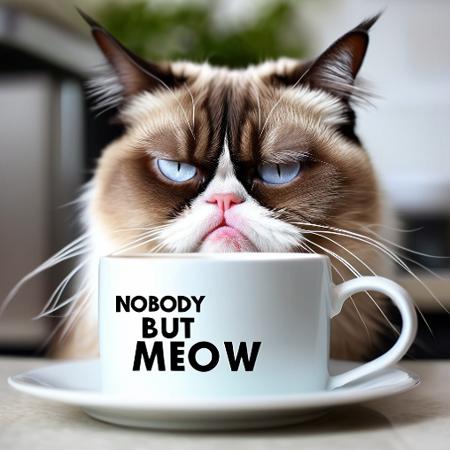Type | |
Stats | 51 0 |
Reviews | (11) |
Published | Apr 22, 2025 |
Base Model | |
Training | Steps: 5,800 Epochs: 10 |
Usage Tips | Strength: 1 |
Trigger Words | alexcolville1 painting |
Hash | AutoV2 8435A80F8D |
Trained on 29 paintings by the Canadian artist David Alexander Colville PC CC ONS (August 24, 1920 – July 16, 2013), who was a Canadian painter and printmaker. To see his works, please go to
tuttartpitturasculturapoesiamusica.com/2017/07/Alex-Colville.html
flickr.com/photos/lilikk/albums/72157624307265995/with/4766798982
One of my favorite artist is the great American realist Edward Hopper. If I have to name his Canadian equivalents, the first name that comes to my mind is David Colville. I am fortunately enough to see some of his works are on display at the AGO, and Colville's distinct visual style and themes has left me with a similar feeling: that underneath all the calm reserve and quiet, subdued atmosphere, something is brewing. I hope I've captured some of that quality in this LoRA😅.
From ChatGPT:
Alex Colville in 1945
David Colville (August 24, 1920 – July 16, 2013) was a Canadian painter and printmaker known for his meticulously detailed, yet hauntingly calm representations of everyday life. His work blends realism with quiet tension, often evoking a sense of stillness just before or after something significant happens.
🖼️ Style and Technique
Magic Realism: While firmly grounded in real-world detail, Colville's work often feels slightly off—imbued with an eerie, psychological weight. Critics sometimes link him with the Magic Realism movement.
Precision and Geometry: Colville used mathematical systems and carefully planned compositions. He would often employ grids and golden ratios, giving his work an underlying formal harmony.
Cool Palette & Crisp Light: His colors are typically subdued—pale blues, grays, sandy browns—contributing to a sense of isolation or control.
🔍 Themes
Stillness and Suspense: His paintings freeze time. There’s a quiet, cinematic quality—like film stills from a thriller where you’re not sure what just happened or what’s about to.
Domestic Life: Many works feature his wife, Rhoda, in quiet domestic settings—yet there’s almost always an emotional tension in the air.
Animals & Nature: Dogs, horses, and birds recur frequently, often staring directly at the viewer or acting as symbolic foils to the humans.
Isolation & Surveillance: Works like To Prince Edward Island (1965), in which a woman with binoculars stares toward the viewer, convey an unsettling reversal—who is watching whom?
🧑🎓 Background
Born in Ontario, Colville studied at Mount Allison University in New Brunswick, where he would later teach.
He served as a war artist in WWII, and his firsthand exposure to human trauma informed the psychological depth of his later works.
He represented Canada at the Venice Biennale in 1966 and received numerous honors, including being made a Companion of the Order of Canada.
🎥 Cultural Influence
Stanley Kubrick was reportedly influenced by Colville’s work when designing the atmosphere for The Shining—especially in the sense of unnerving symmetry and silence.
Colville's work continues to inspire contemporary photographers and painters interested in stillness, narrative ambiguity, and psychological realism.
🌟 Notable Works
Horse and Train (1954): A dark, metaphoric painting of a horse running toward an oncoming train—often read as a meditation on fate or resistance.
Glazed tempera
40 x 53.3 cm
Art Gallery of Hamilton
Gift of Dominion Foundries and Steel Ltd., 1957To Prince Edward Island (1965): A woman with binoculars looks straight at us, a simple moment that becomes deeply unsettling.
Acrylic polymer emulsion on hardboard
60.9 x 91.4 cm
Collection National Gallery of Canada
© National Gallery of CanadaPacific (1967): A man sits in a bright room with an open door revealing a handgun—symbolic of control, death, or looming choice.
Acrylic polymer emulsion on hardboard
53.3 x 53.5 cm
Private collection, Canada
🎨 Modern and Contemporary Artists Influenced by Alex Colville
Colville’s influence runs through artists and visual storytellers who blend precise realism with emotional ambiguity and narrative suspense. Here are a few that echo his aesthetic or psychological tone:
🖼️ Visual Artists & Painters
1. Peter Doig: Though more expressive in technique, Doig's dreamlike and atmospheric work shares Colville’s interest in solitude, enigmatic figures, and memory.
2. Michael Borremans: A Belgian painter known for eerily staged, hyper-realistic scenes that evoke psychological unease—Colville in mood, if not in subject.
3. Caroline Walker: Her interior scenes of women captured in everyday yet intimate spaces recall Colville’s domestic tension, but through a contemporary feminist lens.
4. Tim Eitel: A German painter whose minimalist figures in stark, open environments reflect emotional isolation—something Colville often explored in his outdoor compositions.
📷 Photographers
1. Gregory Crewdson: Known for large-scale cinematic photographs, Crewdson stages scenes of suburban life that feel like film stills—eerily perfect and dramatically still, much like Colville’s.
2. Todd Hido: His moody, empty homes and night-lit exteriors capture the unease and voyeuristic edge often felt in Colville’s compositions.
🎬 Filmmakers and Visual Storytellers
1. Stanley Kubrick: Colville’s painting Woman in Bathtub was used in The Shining (1980), and Kubrick reportedly appreciated Colville’s unnerving symmetry and emotional restraint.
2. David Lynch: Particularly in Twin Peaks or Blue Velvet, Lynch’s quiet towns hiding dark secrets resonate with the latent tension in Colville’s calm, sunlit scenes.
✍️ Writers & Narrative Artists
While Colville didn’t write stories, many writers cite his visual storytelling as inspiration. Margaret Atwood, for example, has spoken about the importance of tone and suggestion, much like in Colville’s visual work.






